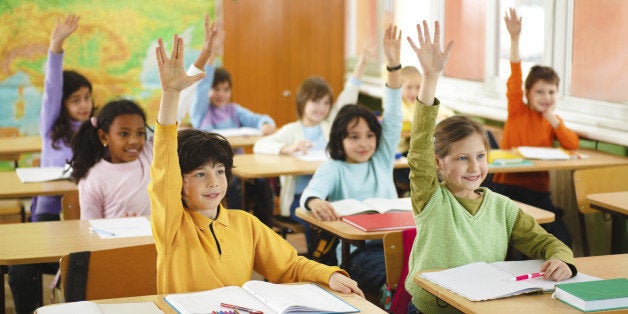
A high-quality public education can build much-needed skills and knowledge. It can help children reach their God-given potential. It can stabilize communities and democracies. It can strengthen economies. It can combat the kind of fear and despair that evolves into hatred.
On my recent visit to Israel, the West Bank and Auschwitz, I was reminded how public education, by bringing children together -- regardless of race, religion or creed -- can promote pluralism.
Public education can also provide the safe harbors our children need, especially in tough times. In December in Ferguson, Mo., I saw how public schools gave kids the space they needed to process what was happening in their community, while instilling hope for their future.
And we are all constantly reminded of how a high-quality public education, one that enables kids to learn teamwork, critical thinking and problem solving -- skills they need to compete in the 21st century -- can lead to good jobs and a more robust economy.
Just last week, a new study was published that found if we eliminate the achievement gap in the United States, we can grow our gross domestic product by 10 percent and raise the lifetime earnings of low-wage workers by 22 percent. This study by the Washington Center for Equitable Growth describes strategies that have worked in other countries to bridge the achievement gap.
We narrow that gap through supporting, not sanctioning, kids, teachers and schools. We narrow that gap through teaching kids how to work with their hands, to work in teams, to solve problems -- not just how to ace a test. We narrow that gap by providing early childhood education and helping all third-graders read at grade level. We narrow that gap when we give all kids, not just kids from wealthier families, access to art and music, librarians and nurses. We narrow that gap by focusing on high-poverty schools that struggle and helping these schools through interventions like wraparound services that combat the impact of poverty.
There's a debate stirring now around the reauthorization of the Elementary and Secondary Education Act, a law signed by President Lyndon B. Johnson as part of his War on Poverty that, at its root, was about leveling the playing field for kids. The law's most recent iteration, No Child Left Behind, in emphasizing testing, pulled us away from the focus on kids, especially those who are poor--as are half of public school students in the United States.
The good news is that pretty much everyone agrees NCLB has to go. The law allowed high-stakes testing to eclipse all else, it failed to close the achievement gap or reach its intended goals, and it must be fixed. More than 18,000 members of the American Federation of Teachers submitted comments on how to fix NCLB.
One teacher talked about the number of pre- and post-tests her students take. She noted that even third-graders attend a Saturday Test-Prep Academy to learn test-taking skills. Her plea? "We need thinkers, not test takers, for our future growth as a nation."
But even more compelling are stories that reveal the inequities that persist in America's classrooms. A teacher from Florida wrote simply, "I work every day to support learning and high expectations for students who are hungry, are homeless, have experienced trauma, and struggle in many ways. ... Please, authorize ESEA in a way that provides for the needs of all students, whether they live in an affluent neighborhood, or in my school's neighborhood."
The current House Republican bill does just the opposite. While it would make some needed improvements to accountability, it would also lock in recession-driven cuts to education. It would allow state and local governments to walk away from their responsibility to maintain funding from year to year. And it would divert money meant to go to public schools that teach poor kids and give it to better-off schools.
A report released this week from the White House found that this bill would cap "spending for the next six years at $800 million lower than it was in 2012." This would happen at a time when child poverty rates are alarmingly high and when Title I -- the biggest federal education program -- has failed to see any increase since 2012. The report also found that high-poverty districts could lose $700 million, while more-affluent districts could gain $470 million.
Make no mistake: The House bill will further harm our most disadvantaged kids. We need a law that gives kids the resources they need, including computers, lower class sizes, nurses and counselors, even when their communities can't afford them.
A high-quality public education can unlock our children's potential. It can bring communities together. It can ensure a top-notch workforce for our economy and an engaged citizenry for our democracy. We have an opportunity with the ESEA reauthorization to help reclaim the promise of public education. Now, let's work across the aisle to reclaim it.
